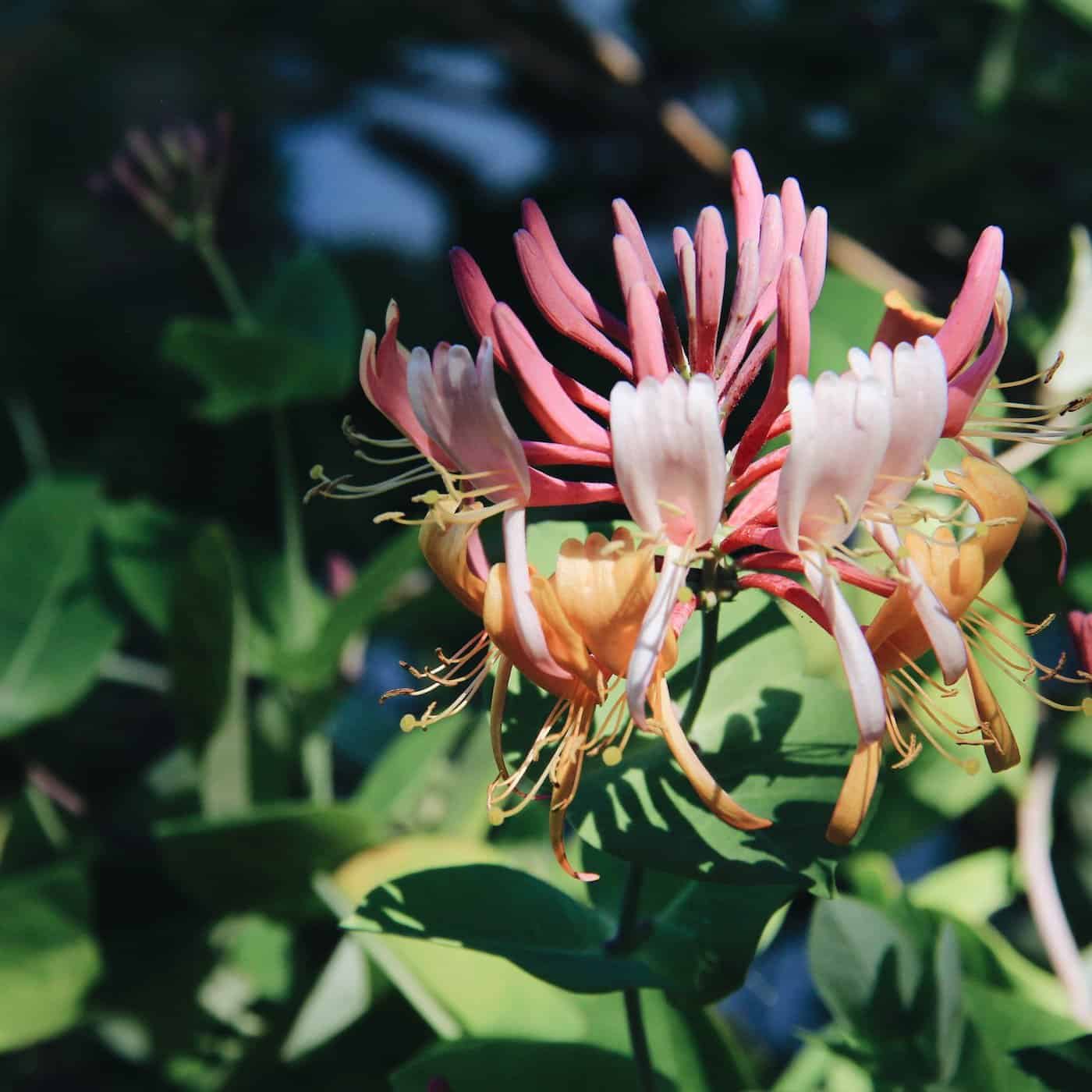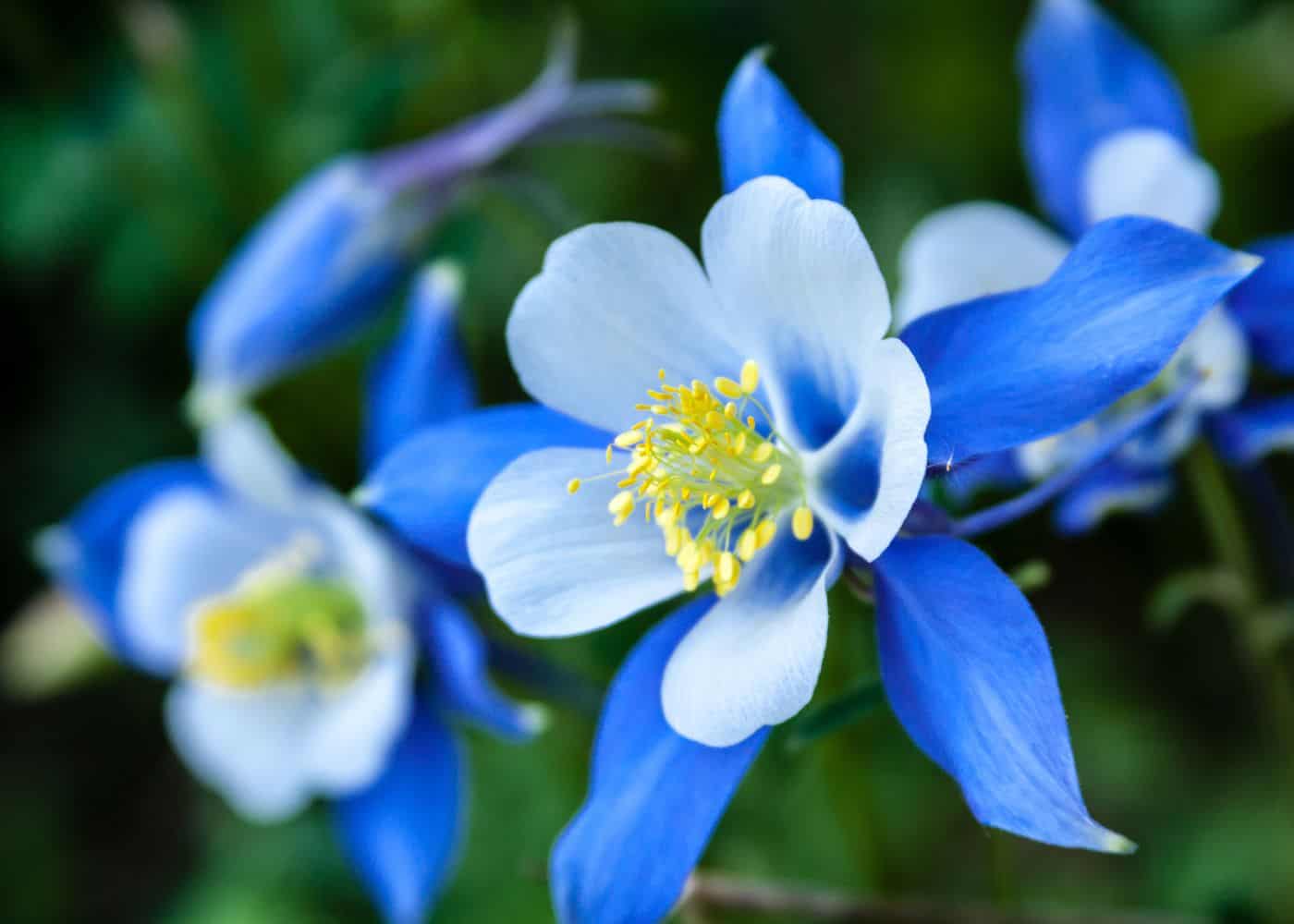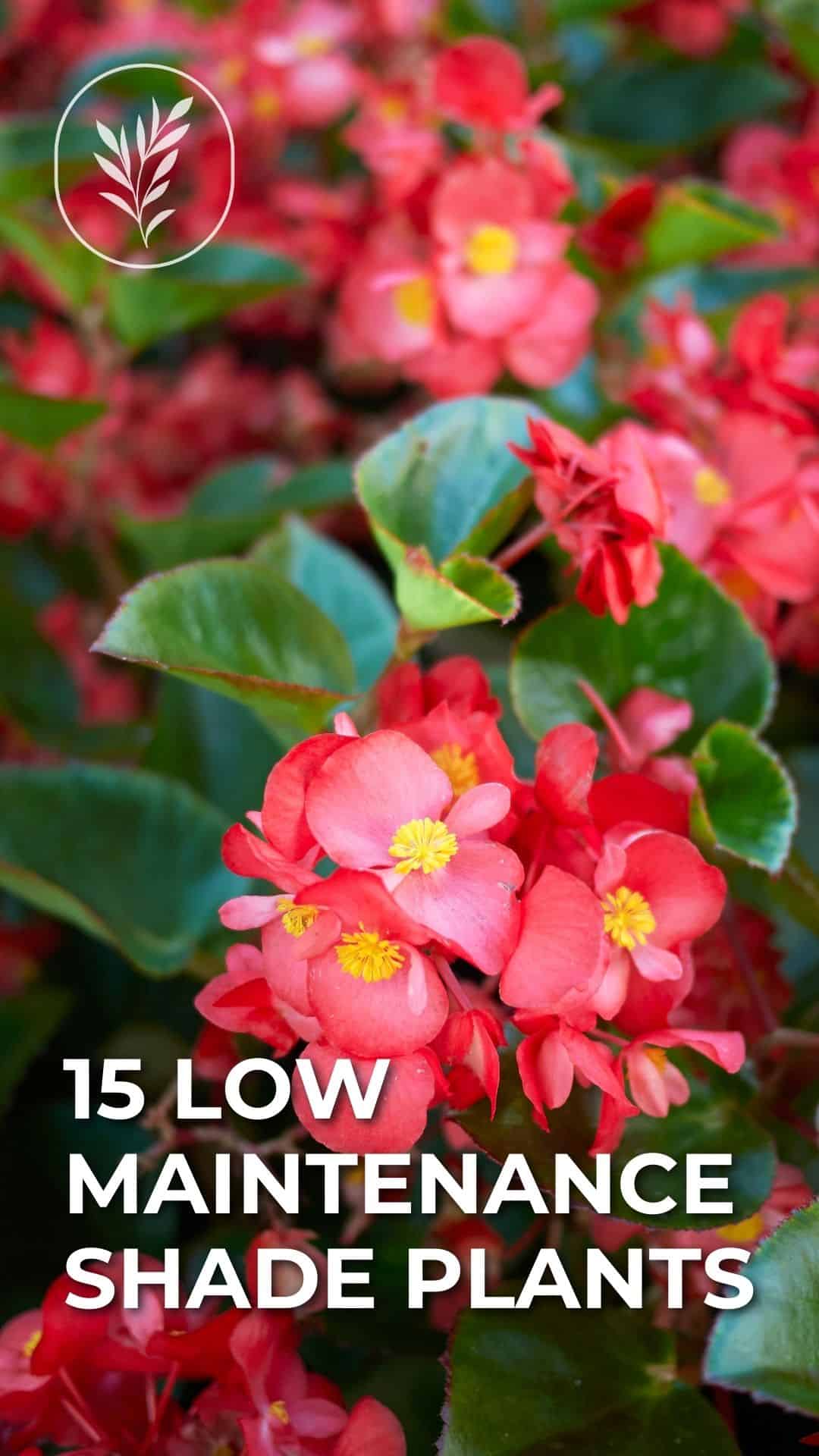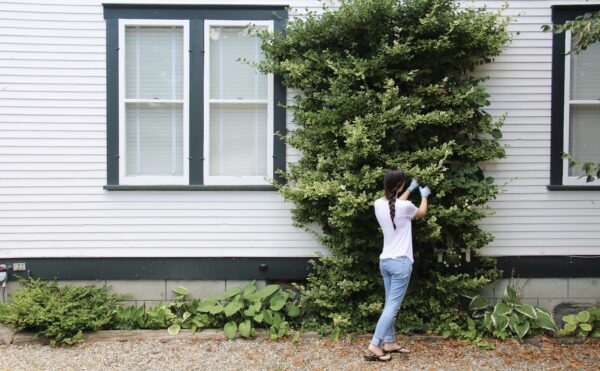Just because you have a shaded backyard doesn’t mean you can’t have an eye-catching garden! Many plants thrive in the shade or partial sunlight. If you’re planning to redo your shaded garden, look at these 15 low-maintenance shade plants.

Trees
Shade-tolerant trees tend to be smaller species that grow around the edges of woods or in clearings. They typically do well in a dappled shade or where they’ll get morning sun and shady afternoons.
1. Japanese Maple (Acer palmatum)
Beautiful Japanese maples come in dozens of varieties and can add a splash of spring and autumn color to a garden. Many varieties boast vibrant, red leaves that tend to develop leaf scorch in sunny and dry areas, making them well-suited to a shady yard.
2. Flowering Dogwood (Cornus)
Flowering dogwood produces gorgeous spring flowers, red fruit, and vibrant red autumn leaves. They tend to be more forgiving of higher sunlight levels, but as understory trees, they do best in a shady environment.

Shrubs
Many shrubs are naturally shade-loving plants because they tend to grow underneath trees. They can offer a great touch of color to your shady yard, especially if you choose a blossoming variety.
3. Boxwood (Buxus sempervirens)
Common boxwood is the evergreen shrub often used to create dazzling topiaries and hedge borders. The dense, green leaves offer a thick wall of color, and can be trimmed into nice, neat shapes.
4. Japanese Plum Yew (Cephalotaxus harringtonii)
Japanese plum yew is a flashy evergreen that thrives in a shady garden. With upright, pointed foliage, it can add an interesting touch to your garden. Even better, most deer won’t bother with the spiky needles.

5. Azalea and Rhododendron (Rhododendron species)
With so many Rhododendron species available, including a wide range of azaleas, you can take your garden from drab to stunning. Enjoy big, brilliant spring blooms in nearly any color from evergreen and deciduous varieties.

Ground Cover
Ground cover can be tricky in shaded environments. While most people turn to sun-loving grass to cover their yards, you can choose some shade-friendly creeping plants. As a bonus, you won’t have to mow them!
6. Wild Ginger (Asarum canadense)
This isn’t the ginger you’re used to putting in teriyaki. Wild ginger may smell like its culinary counterpart, but isn’t edible. It’s evergreen, deer-resistant, and thrives in the shade. The beautiful white, green, or purple blossoms are a treat for the eyes in spring and summer.
7. Sweet Woodruff (Galium odoratum)
Sweet woodruff is a beautiful option when trying to cover the ground. This creeping, mat-forming perennial grows fragrant, white flowers. If you’ve had issues with rabbits in the past, good news! They tend to ignore this plant.

Vines
Flowering vines can be a great choice to elevate the vertical aesthetic of your garden, and several thrive in the shade. Add a touch of whimsy to your shady garden with some of these vines.
8. Creeping Fig (Ficus pumila)
Creeping fig is a beautiful evergreen that many people pot and bring indoors, but it also grows outside. The vines will eagerly climb fences and walls, and when left to their own devices, they can grow up to 15 feet.
9. Honeysuckle (Lonicera japonica)
Shade-loving honeysuckle has beautifully attractive, sweet-smelling flowers, wafting a nice vanilla scent as they bloom to attract beneficial pollinators. The flower and nectar are also nice edible treats for people, too.
10. American Wisteria (Wisteria frutescens)
American wisteria produces beautiful purple flowers as it climbs and grows. The flowers make it a great choice for arbors, posts, or trellises, creating a nice splash of eye-catching color.

Perennials
For a truly low-maintenance garden, what’s better than perennials? As long as they’re kept healthy, they come back year after year. If you have a garden full of shade, perennials like these will thrive.
11. Columbine (Aquilegia species)
Some of the best shade-friendly wildflowers you can add to your garden are columbines. These perennials attract hummingbirds and smell amazing. Try to choose non-hybrid plants to keep their vibrant colors coming back year after year.

12. Bleeding Heart (Dicentra species)
For a unique splash, bleeding hearts produce dainty blossoms shaped like, you guessed it, hearts. The delicate blooms add a nice splash of color and will thrive in shady areas.
13. Lily of the Valley (Convallaria majalis)
Lily of the valley thrives in partial and full shade and can be an attractive addition to any garden. With a dappling of small white blooms, this plant can add a sweet-smelling touch to your shaded yard.
Annuals

Annual plants are a bit more work than other types because you have to replant them yearly. However, several are as simple as setting it and forgetting it for easy gardening and will thrive in a shady garden.
14. Begonia (Begonia species)
Begonias are considered perennial in warmer climates, but most gardeners approach them as annuals. They prefer dappled or filtered light, making them a fantastic option for shady gardens. They come in several vibrant shades, so take your pick and grow the rainbow!

15. Impatiens (Impatiens species)
Impatiens are the classic shade annual, for good reason. They offer a rainbow of hues and thrive in those hard-to-grow areas. Plant the seeds in February, and let your garden shine!
FAQs
What is the easiest plant to grow in the shade?
Ferns, smooth hydrangeas, and bleeding hearts are some of the most common and easiest plants to grow that will thrive in the shade. These plants are proven to successfully grow in the shade and are easy to maintain.
What is the most low maintenance outdoor plant?
Sunflowers, Peonies, and Pansies are very low-maintenance plants. These plants will make any outdoor space look stunning.
Do all plants grow in shaded areas?
While some plants thrive in shaded areas, not all plants are adapted to growing in shade. Lots of flowers, shrubs, and trees, need direct sunlight. It is important to know if the plant you are planting requires minimal or lots of sun to thrive.
References
- University of Minnesota: Gardening in the shade
- The University of Vermont: Plants for Shade Gardens
- University of Illinois: Beyond hostas in your shade garden
- Michigan State University: Gardening in shade: Choose from a “smart” plant palette










